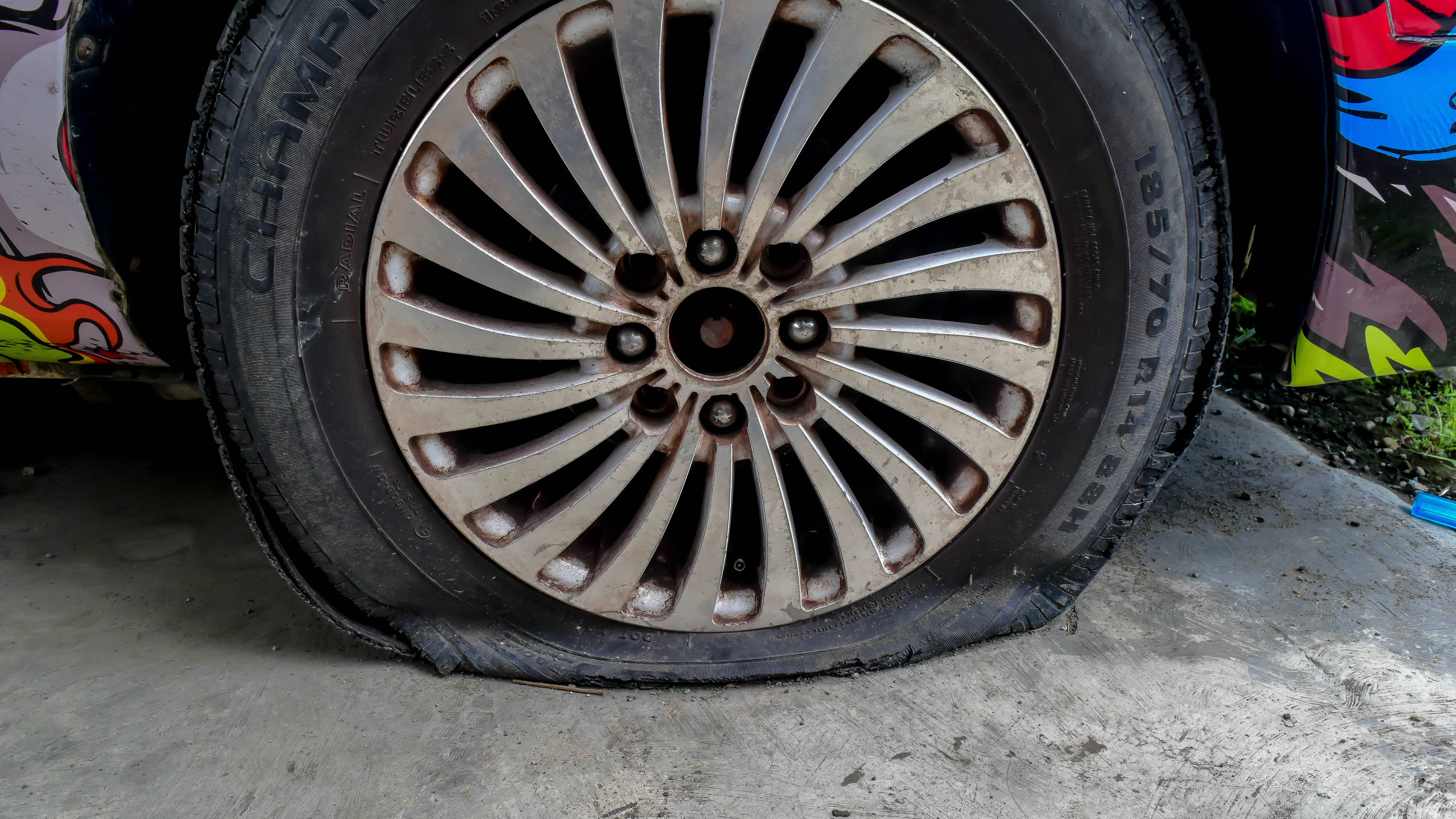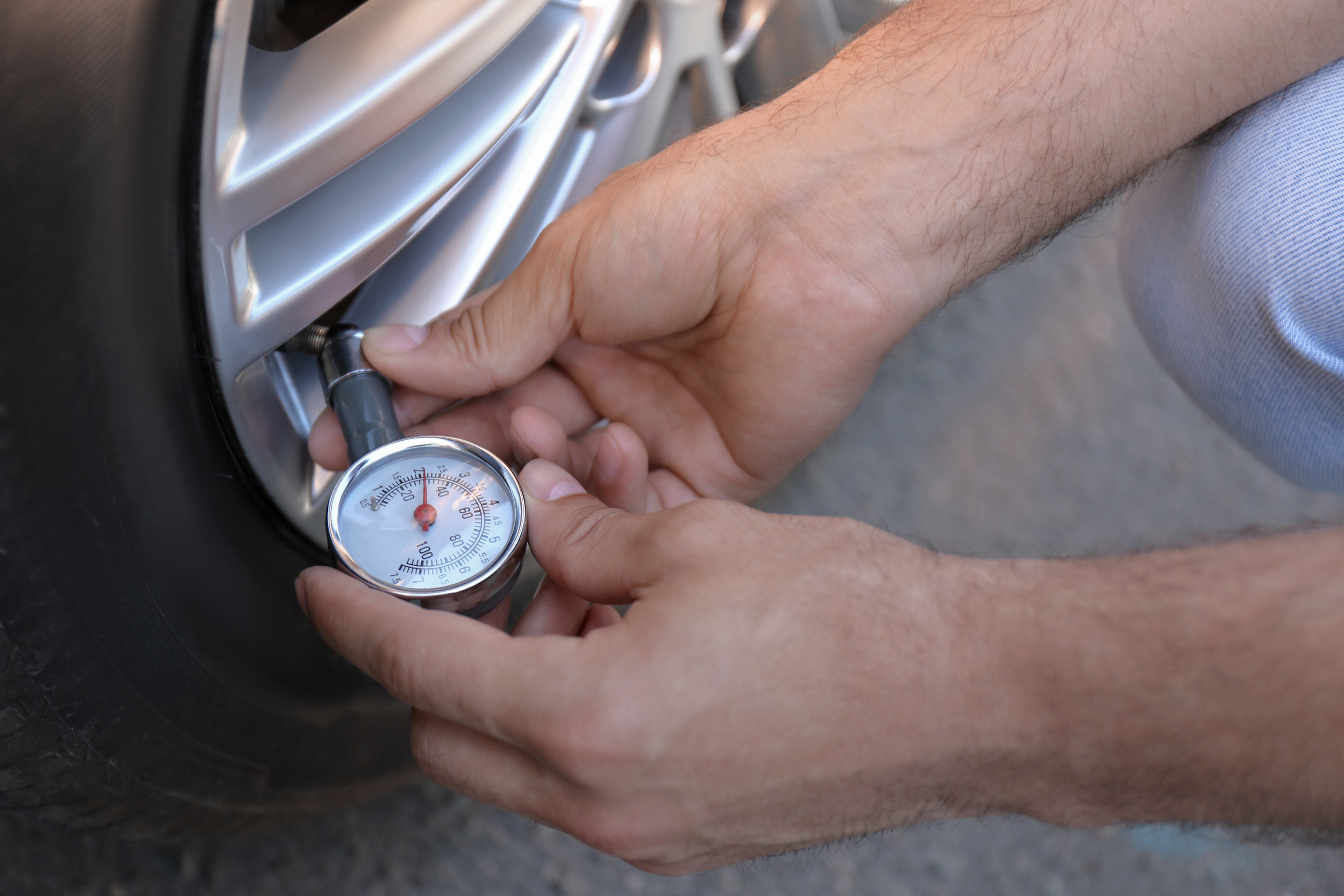
Tire maintenance & safety

Tire maintenance & safety
Modern tires are amazing. Manufacturers have technologies to create tires that are the pinnacle of performance. They can offer unmatched safety in the face of adverse conditions, grip the road at absurdly high speeds, and even crawl over just about anything on or off the road. What’s even more exciting is the continual raising of the bar with each new model hitting the shelf as technology advances.
One thing tires may never break away from is their dependence on pressurized air. Not only does tire pressure provide structure to the tire, but it also has a profound impact on the tire’s behavior and performance.
Let’s discuss how to tell if your tire air pressure is off, how to adjust it, and why it’s so important.
The air in your tires works to support your vehicle. Without it, the tires would be nothing more than a thin piece of rubber and steel sitting between the wheel and the ground. Thankfully, that makes it pretty easy to tell if your tires need air—even without a tire pressure gauge.
If a tire is low, the sidewall below the tire will begin to compress. If you notice that a portion on one tire is smaller than the others, you know you need air. However, you might not be able to tell if all four tires are running low on air unless you’re very familiar with how the tires look normally.
This is why the best way to tell if your tires need air is to use a tire pressure gauge. These gauges come in a variety of types, but all do the same thing. You simply unscrew the tire’s valve stem, hook up the tire pressure gauge and take note of the reading. If the reading is any lower than what the vehicle calls for, you know the tire needs air. Consult your door jamb or owner’s manual for your vehicle’s proper PSI.
You can drive with low tire pressure, but it’s not smart to. You might have learned that off-road and race vehicles often run lower than normal tire pressures. This offers advantages in specific settings, but isn’t safe for general street use. You want to keep your tire pressure to what’s specified by the vehicle to promote safe driving, reduce excessive tire wear, prevent damaging the wheels, and even keep fuel economy from dropping.
Overinflating the tires can be just as dangerous as underinflating. For one, you might exceed the maximum tire pressure rating, resulting in the tire's catastrophic failure. Inflating the tire more than is required also reduces the size of the tire's contact patch. As that contact patch shrinks, traction is reduced. Let's also not forget that overinflation makes the tires stiffer, which can make the vehicle uncomfortable for passengers.
The best psi you should run in your tires can be found inside your car's door jamb. Thankfully, most auto manufacturers make it extremely easy to find out how much tire pressure is required. The sticker in your door jamb will also give you information on the size of the tires the vehicle is intended to work with—which comes in handy when it's time for replacements. For those who might have are into plus sizing your vehicle’s tires, check out your tire’s sidewall for information.
While there are plenty of complicated systems on the vehicle, none are simpler to address than your tire pressure. All you’ll need to do this is a tire air pressure gauge and a compressed air system with the proper attachments. If you don’t have a compressor at your disposal, you can always visit the local gas station's tire filler. Just remember to bring some extra quarters along if free air systems are not available. Alternatively, most tire shops offer free air, but you might have to call first to verify.

Park as close to one as possible while still giving yourself enough room to work, don’t bring the compressor to you. This will prevent you from having to lug around long lengths of air hose and makes clean up much easier.
After unscrewing your valve stem, place it in your pocket. These little caps are easy to drop and lose track of.
Break out your tire pressure gauge and press it onto the valve stem. Make sure there are no leaks when you do, as they will throw off your reading. You know there’s a leak when you hear a hissing noise – this is air escaping.
If your tire pressure is out of spec, simply adjust the tire pressure. To add, simply connect the airline to supply air. If there’s too much air, you will need to release it. Doing so is achieved with the dimple on the rear of your pressure gauge that depresses the valve stem or the pressure release button.
Always double-check your air pressure after adding air with a proper tire pressure gauge. You’ll want to do this even when the compressor has a PSI setting, as there’s no guarantee it's getting a good reading.
Repeat steps four and five if the air pressure is too high or too low. Also, look for any irregularities in your pressure reading that may signify a leak.
Rinse and repeat the process for all five tires (don’t forget the spare!) to ensure all are to spec and safe to drive on.
Now, you might think overlooking tire pressure isn't a big deal, but we can assure you this is not the case. You'll always want to run the tire pressure the car manufacturer suggests on a street-driven vehicle for many reasons—safety being chief among them. You might also feel tempted to take advice from folks who run different pressures to enhance different characteristics of the tire. While that might be great for any form of specialty driving, it is not wise to do so if you’re just driving on the street.
Running the tire pressure the manufacturer suggests will give you the best balance of efficiency, performance, longevity, and safety. Notice we say auto manufacturer and not the tire manufacturer? Keep in mind the pressure listed on the tire sidewall is not the optimal pressure but rather the maximum air pressure, and you don't want to fill the tire to match that rating.
The reason air pressure affects the vehicle's performance is simple. An improperly inflated tire does not maintain its intended shape. This means it takes more energy to move forward, losing some of its performance characteristics. It also doesn't protect the wheel from impacts quite as well and may even lead to an excessive buildup of heat, both of which can lead to blowouts.
As we said, overinflating the tires is also just as dangerous. The reduced contact patch reduces traction, and negatively impacts the tire's ability to conform to irregularities in the pavement. Overinflation also puts tires at risk of blowouts because of the excess pressure.
In addition to vehicle safety, tire pressure also plays a significant role in fuel efficiency. Most vehicles with inflation problems are rolling on tires that are underinflated. When a tire's air pressure is too low, more of the tire will contact the ground surface and rolling resistance increases. That means the engine needs to work harder to turn the tires, and it consumes more fuel to do so.
Tire pressure also plays a key role in the life of your tires. An overinflated tire causes uneven wear on the center tread, greatly decreasing the overall life of a tire. Underinflated tires are prone to excessive shoulder wear. Uneven tread wear can also cause safety problems if left unchecked for long periods.
Checking your tire pressure is simple, but it's a job you need to do regularly. Over time, pressure will fluctuate, not because the tire is faulty, but on account of natural conditions. Standard tire maintenance requires that you check your tire pressure at least once per month.
Still, you may want to check more frequently if you subject the vehicle to any extreme conditions or live in an area where the climate dramatically changes in short periods.
That said, the next time you're at the auto parts store, grab yourself a tire pressure gauge, learn how to use it, and keep it in the glove box so you're reminded to check your tire pressure every time you open it.
Search By